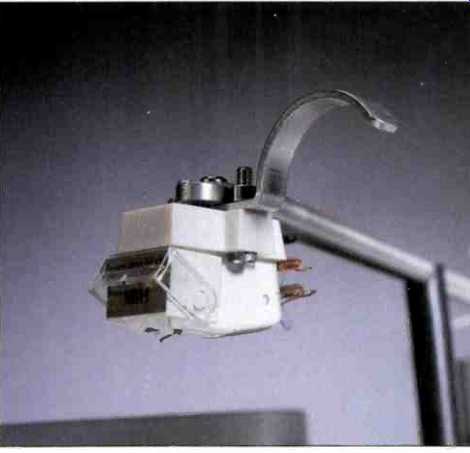
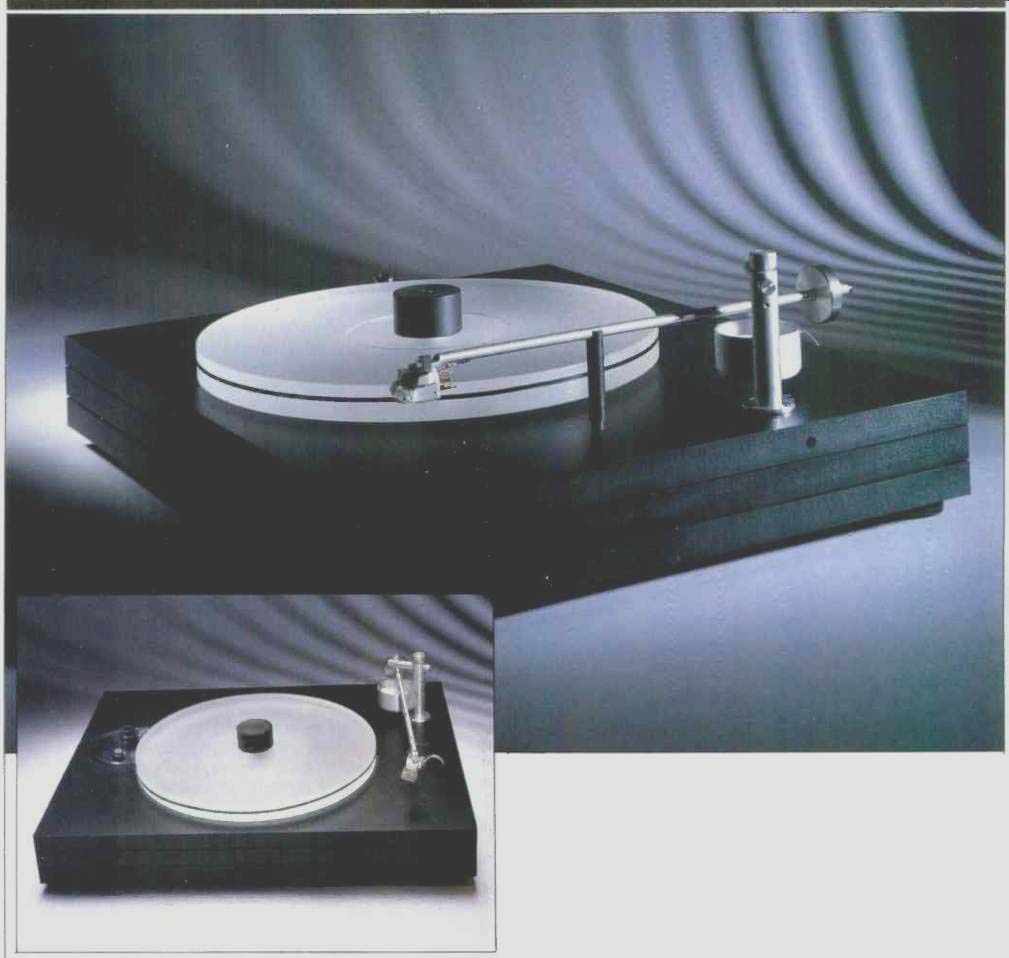
Manufacturer's Specifications
Turntable and Tonearm:
Drive System: Belt.
Motor Type: 24-pole synchronous
Speeds: 33 1/2 and 45 rpm
Wow and Flutter: 0.01 %
Rumble: -84 dB
Speed Accuracy: Within 0.001%
Arm Type: Pivoted, viscous-damped, with fixed cartridge mount and anti skating.
Pivot-to-Stylus Distance: 9 in. (22.9 cm)
Overall Length: 11 3/8 in. (28.9 cm)
Effective Mass: 95 grams
Weight Range: 4 to 15 grams
Dimensions: 19 in. W x 15 in. D x 7 in. H (48.3 cm x 38.1 cm x 17.8 cm) including optional dust cover.
Weight: 34 lbs. (15.5 kg)
Price: $1,195; dust cover, $100
Company Address: c/o Transparent Audio Marketing, Route 202, Box 117, Hollis, Maine 04042.
Cartridge:
Cartridge Type: Moving magnet.
Stylus: Van den Hul Type II; radii, 5 x 75 microns.
Cantilever: Solid boron rod, 0.3 mm diameter.
Moving Mass: 0.42 mg.
Output: 5 mV at 5.6 cm/S.
Tracking Force: 1.0 gram recommended, 1.25 grams maximum.
Mass: 6.5 grams.
Recommended Arm Mass: 4 to 8 grams.
Vertical Tracking Angle: 20° to 25°.
Coil Inductance: Approximately 425 mH.
Maximum Load Capacitance: 400 pF including tonearm, cable, and preamp input.
Frequency Range: 10 Hz to 22 kHz.
10-kHz Burst Distortion: Less than 0.5%.
Channel Separation: Greater than 26 dB at 1 kHz, greater than 20 dB at 10 kHz.
Price: $350. Company Address: c/o Rockport Technologies, R.F.D. 1, Box 1113A, West Rockport, Maine 04865.
The Well Tempered Record Player consists of a turntable and tonearm combination based on the separate Well Tempered turntable and Well Tempered tonearm (now called the Well Tempered Classic arm) that I reported on in the July 1988 issue. It is sold as a lower cost version based on the unique features of the original turntable and tonearm. Bill Firebaugh, the designer, came up with some interesting, if unorthodox, ideas for his first tonearm and turntable that resulted in very good sound.
The tonearm of the Well Tempered Record Player has the same basic design as the original arm but does not have all of its features. For example, the caliper adjustment for anti skating and the vertical tracking angle knob are absent from this version; the VTA can be set manually by moving the main tonearm post up or down in its base mounting collar, while the anti-skating is not adjustable. The turntable of the Well Tempered Record Player is more like the original model. It has a less expensive base and lighter motor mounting, but it does use the same turntable platter and a very similar main bearing. In 1988, I tested the original Well Tempered tonearm with a van den Hul MC-One moving-coil cartridge; for this report, I used the lower cost van den Hul MM-1 moving-magnet model.
The turntable of the Well Tempered Record Player is very similar in appearance to the more expensive Well Tempered turntable. The tonearm is finished in natural aluminum and is much simpler than the Well Tempered tonearm. The tone arm is basically a unipivot design, with the pivot suspended by two nylon strings so that it sits in a cup of viscous fluid.
The fluid damps any rapid motion of the tonearm and causes it to be "well tempered." A bracket at the end of the tonearm makes mounting the cartridge and adjusting the offset angle fairly easy.
The motor fits down in an oversized hole cut through three layers, each 3/4 inch thick, of the turntable base; it sits on the same shelf, or platform, on which the turntable is placed.
Besides the drive belt, this shelf or platform is the only mechanical connection between the motor and the turntable. This means that you can increase the isolation between them by placing them on a foam pad. However, I didn't find this necessary; the isolation is already very good. The Well Tempered Record Player is lighter than the original setup, due to the lighter base, but appears solid and well built.
The turntable base is 19 inches wide, 13 3/8 inches deep, and 2 1/8 inches high. This height includes the rubber feet, which allow clearance for the turntable's main bearing well that protrudes from the bottom of the base. The tonearm tower is 3 1/8 inches high, making the total height 6 inches.
The base of my sample was finished in black vinyl and consisted of three particleboard layers, each 3/4 inch thick. (In current production, the layers are of medium-density fiberboard, and the finish is Vitricor, a clear acrylic with a black inner surface.) The layers are fastened together by a viscous adhesive that also provides mechanical damping to this sandwich construction.
The motor, which sits in an opening 4 inches in diameter in the left side of the turntable base, has a pulley for the thin, flat drive belt that also wraps around the platter. The stepped pulley has two diameters to allow both 33 1/3- and 45-rpm speeds. Speed change is accomplished by manually moving the belt :o the appropriate pulley. The platter is made of a clear acrylic and has a recess in the center to allow for the record label's extra thickness. The record spindle is highly polished and has a tapped hole in the center. The record clamp is 1 11/16 inches in diameter and 15/16 inch high; a screw in the center allows the clamp to be rotated down to lock a record against the surface of the platter. This allows any mechanical vibrations within a record to be absorbed into the platter. Acrylic was chosen for the platter because it has a mechanical impedance close to that of the plastic used to make records.
The record spindle and turntable shaft are made as a single piece. The top of the shaft is machined with a ledge, and the platter has a hole for the shaft and a matching cutout for the ledge. This design allows the platter to sit snugly on the shaft without rocking. The bottom of the shaft sits on a Delrin bearing plate at the bottom of the bearing well. What makes Bill Firebaugh's Well Tempered turntable designs unique is that he places the two upper bearings close together on one side of the well, toward the motor, and another set of two bearings on the opposite side of the well at the bottom; he relies on the tension of the belt to pull the shaft against these bearings. The bearing well is filled with viscous fluid, which provides lubrication, vibration damping, and speed stability.
The tonearm is a simplified version of the original Well Tempered design. It uses the hanging-thread idea of the original arm with an adjustment for azimuth provided by a knob on the top of the main tonearm pillar. This knob is attached to the end of one of the threads from which the tonearm is suspended. A plastic disc, with two large holes through it, is attached to an aluminum rod. This rod has a collar at the top through which the main armtube passes.
The extremely fine lead wires exit the armtube at a point directly in front of this collar. These leads are attached to the gold-plated phono sockets and a five-way binding-post ground terminal. The phono sockets and ground terminal are mounted on a black-anodized aluminum bracket that is fastened toward the rear of the turntable base by two screws. The tonearm rest, a 2-inch-long plastic rod with a groove at one end, is fitted into a hole in the turntable base.
In keeping with the lower cost philosophy, I installed a van den Hul MM-1 moving-magnet cartridge to test the Well Tempered Record Player. This cartridge features the same famous van den Hul stylus used in the more expensive MC One moving-coil cartridge. The shape of this stylus is closer to that used to cut the original record groove than most other stylus shapes. The van den Hul MM-1 is the first cartridge for which I have ever measured a negative absolute polarity. (The EIA Standard calls for a positive output when the stylus moves out toward the record's edge.) However, van den Hul says its cartridges always have positive polarity for outward stylus motion, so it's possible that the arm was mis-wired or some other mishap occurred.
----------------
MEASURED DATA
Well Tempered Record Player:
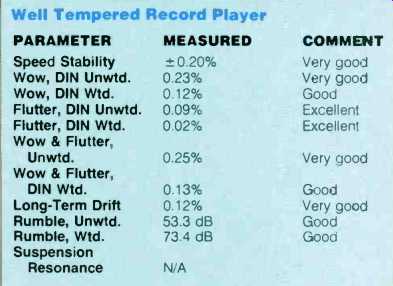
Tonearm:
Pivot-to-Stylus Distance: 9 3/16 in. (233 mm). Pivot-to-Rear-of-Arm Distance: 213/16 in. (71.4 mm). Tracking-Force Adjustment: Sliding counterweight.
Tracking-Force Calibration: None.
Cartridge Weight Range: 6 to 17 grams.
Counterweights: 67.5 and 20.9 grams.
Counterweight Mounting: Locked to rear of tonearm with nylon screw.
Sidethrust Correction: Built-in as part of pivot design.
Pivot Damping: Viscous fluid in pivot cup.
Lifting Device: Finger lift on headshell.
Headshell Offset: Adjustable.
Overhang Adjustment: Slot in armtube insert.
Bearing Type: Hanging threads; see text.
Bearing Alignment: See text.
Bearing Friction: Very low; see text.
Lead Torque: Very low.
Arm Lead Capacity: 37 pF, left and right.
Arm Lead Resistance: 1.2 ohms, left and right.
External Leads: None.
Mounting: Aluminum insert in base.
Cartridge:
van den Hul MM1
Coil Inductance: Left, 458 mH; right, 450 mH.
Coil Resistance: Left, 1,093 ohms; right, 1,100 ohms.
Output Voltage: Left, 0.67 mV/cm/S; right, 0.64 mV/cm/S.
Tracking Force: 1.6 grams.
Cartridge Mass: 6.65 grams.
Microphony: Extremely low.
Hum Rejection: Very good.
High-Frequency Resonance: 24.7 kHz.
Rise-Time: 23 S.
Low-Frequency Resonance: 9.5 Hz.
Low-Frequency 0: 2.5.
Recommended Load Resistance: 47 kilohms or higher.
Recommended Load Capacitance: 250 pF. Polarity: Negative.
----------------
Measurements and Listening Tests
Figure 1 shows the frequency response and crosstalk for the van den Hul MM-1 cartridge mounted in the Well Tempered Record Player tonearm. The frequencies above 12 kHz are rolled off, correlating with comments by the listening panel that the sound was "more subdued and recessed" and "smoother and more mellow, yet clear" compared to the reference system. The crosstalk in the left channel was greater than that in the right, which seemed to affect the sense of spaciousness. Comments such as "not as open sounding" may be attributed to this crosstalk. Usually, the high-frequency resonance of most cartridges can be seen in the rise in crosstalk, but for the van den Hul MM-1, this resonance, which I measured at 24.7 kHz using another technique, is not very apparent. However, the fact that the crosstalk doesn't increase at high frequencies, as is the case for most cartridges, can be correlated with the high rating given to the MM-1 for image stability by panel members and to a comment by one of them that the "cymbals are very precise.'
The low-frequency response from 5 to 20 Hz, shown in Fig. 2, indicates that the damping for this tonearm is not as great as that for the original Well Tempered tonearm but is still very acceptable. Comments that the bass was "thuddy" and "not as deep as the reference" may correlate with a glitch that was seen at about 140 Hz when a slow sweep was taken from 20 to 1,000 Hz (not shown). This glitch indicated a mechanical discontinuity or anti-resonance in the tonearm system, which could cause the bass to have a "thuddy" characteristic and also can be correlated with a comment about piano sound having a "slight woodiness and coloration." The vertical and lateral responses of the tonearm and cartridge combination indicated that the effective mass was very similar in both planes, which is a good characteristic.
Figure 3 shows the output versus time for a mechanical impulse applied to the tonearm near the cartridge. Each division is about 2 mS, and it is apparent that there is reflection of energy inside the tonearm delayed from the original signal by a little less than 8 mS. This would correspond roughly to the glitch at 140 Hz in the frequency response. The delayed energy can be correlated to the comment about the bass being "thuddy" when listening to tightly miked drums, and to comments such as "slight lack of coherence" and "more ringing" in orchestral works.
The spectrum of the output due to a mechanical impulse to the armtube is shown in Fig. 4. The peak at 1,100 Hz, and quite a bit of output up to about 3,200 Hz, could account for comments about the sound of strings being "sharp" and brass being "bright and ringy." The lack of high-frequency crosstalk seen in Fig. 1, and the good interchannel phase response indicated by Fig. 5, contribute to the ability of the cartridge and tonearm combination to reproduce individual instruments with excellent placement. It is very likely the reason why one panel member commented that the Well Tempered Record Player "does a good job on recordings with ambience."
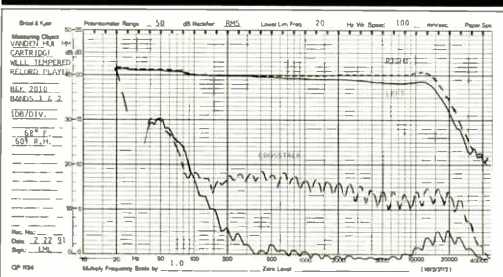
Fig. 1--Frequency response and interchannel crosstalk of the van den Hul
MM-1 cartridge in Well Tempered Record Player tonearm. (The crosstalk increase
at very low frequencies is an artifact of the B & K 2010 test record.)
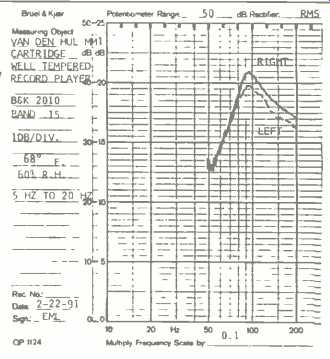
Fig. 2--Slow-sweep check (5 to 20 Hz) for low-frequency arm/cartridge resonance.
The resonance is at 9.5 Hz with a Q of 2.5.
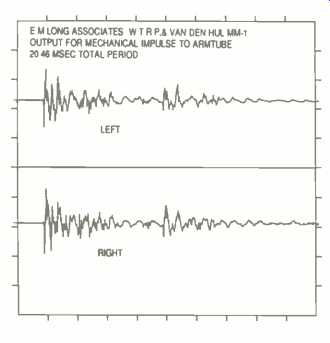
Fig. 3--Output vs. time of arm and cartridge for a mechanical impulse applied
to the armtube.
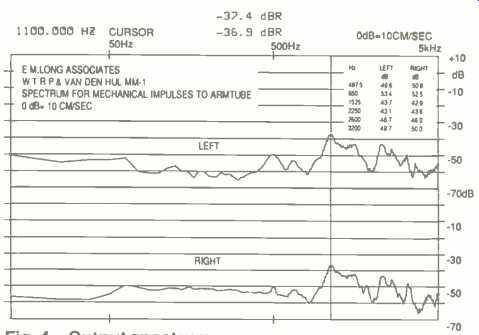
Fig. 4--Output spectrum of arm and cartridge from 16 mechanical impulses
applied to armtube and averaged.
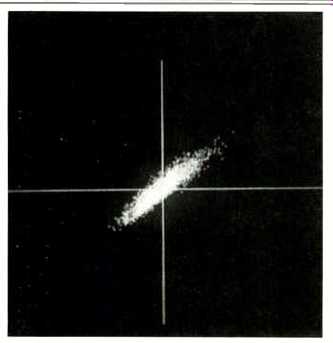
Fig. 5--Interchannel phase difference, using pink noise from B & K 2011
test record, band 7.
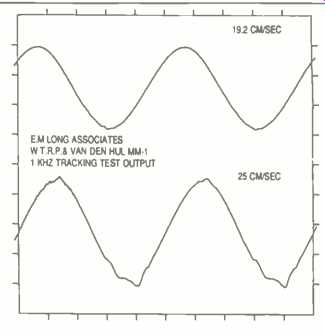
Fig. 6--Arm/cartridge tracking with 1-kHz test tone from B & K 2010
at 19.2 and 25 cm/S.
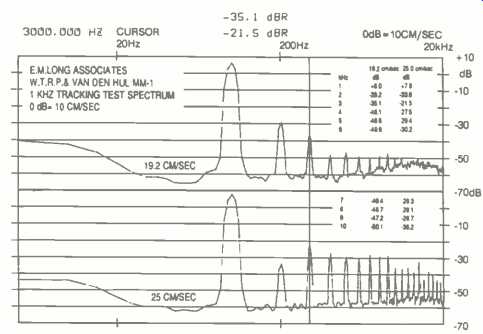
Fig. 7--Spectrum analysis of output when reproducing the test signals of
Fig. 6. The third harmonic (at the cursor position) is 1.7% for the 19.2-cm/S
tone and 8.4% for the 25-cm/S signal. Note the increase in the odd harmonics
at the higher level.
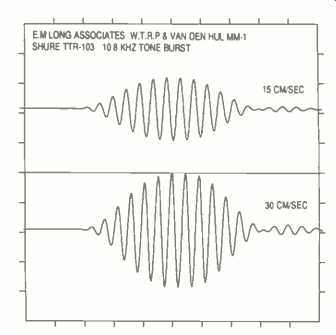
Fig. 8--Output with 15and 30-cm/S, 10.8-kHz pulse tests from Shure TTR-103
test record.
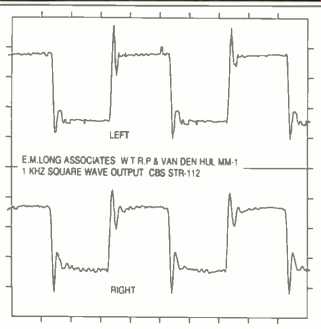
Fig. 9--Arm/cartridge output for 1-kHz square wave, CBS STR-112 test record.
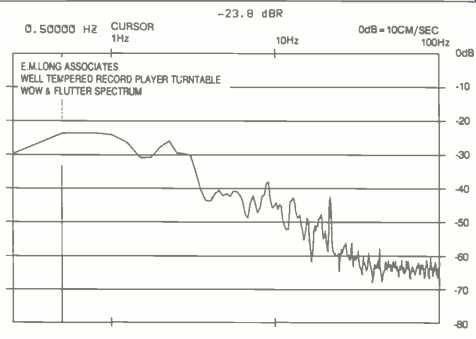
Fig. 10--Turntable's wow and flutter spectrum, from 0 to 100 Hz, at 33 1/3
rpm. The peak at about 10 Hz is due to the arm/cartridge resonance.
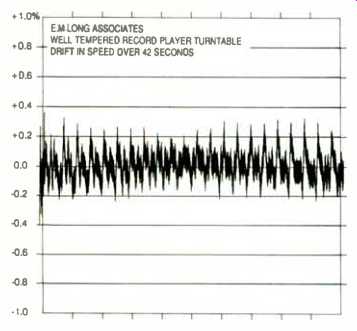
Fig. 11--Speed drift over a 42-S period. Cyclic variations at 1.8 S, or 0.56
Hz, are related to the rotational speed of 33 1/3 rpm.
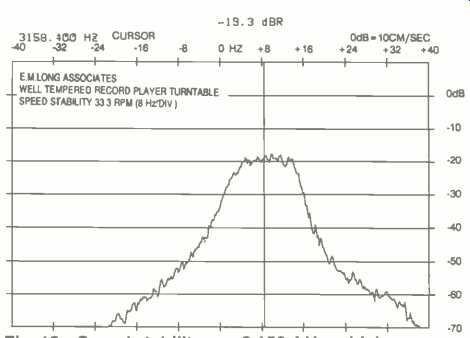
Fig. 12--Speed stability at 33 1/3 rpm; O Hz is referenced to the 3,150-Hz
tone on the B & K test record. The cursor is at II II 3,158.4 Hz, which
means that either the test record's tone is slightly high or the turntable
is running 0.27% fast. Stability is ±0.17%.
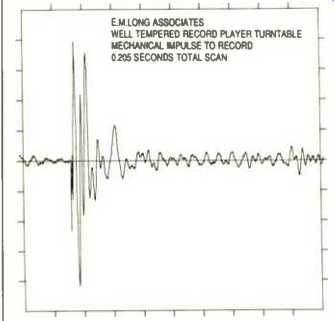
Fig. 13--Output vs. time for a mechanical impulse applied to the edge of
a stationary record, with stylus resting in groove.
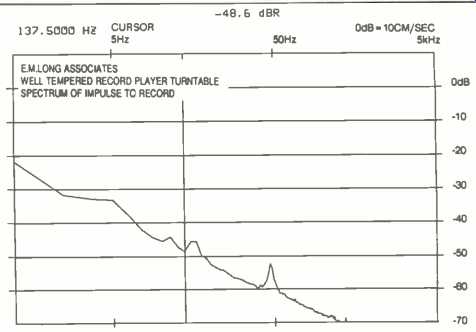
Fig. 14--Spectrum to 5 kHz of output from mechanical impulse applied to the
edge of a stationary record, with stylus resting in groove.
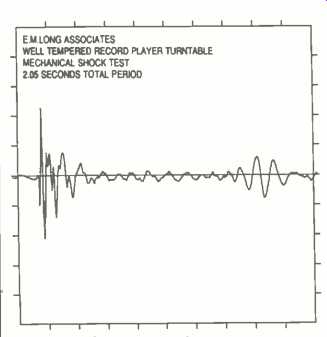
Fig. 15--Output vs. time for a mechanical shock applied to the platform on
which the turntable rested.

Fig. 16--Spectrum to 5 kHz of the output caused by mechanical shock applied
to the platform.
Figure 6 shows the output of the van den Hul MM-1 cartridge for the two highest level bands on the B & K 2010 test record. The 1-kHz signal looks reasonably good at 19.2 cm/S, but at the 25-cm/S level, distortion of the waveform is apparent. Many cartridge and tonearm combinations have difficulty even staying in the groove at the 25-cm/S velocity, so the van den Hul and Well Tempered combination is very good in this respect. The distortion spectra of these test signals are shown in Fig. 7. The distortion is reasonably low at the 19.2-cm/S level. At the 25-cm/S level, the distortion is still relatively low, but the output from the third to ninth harmonics will add some brightness to the sound of strings and brass during high-level passages. Sorting out the comments from the listening panel was a little difficult because some of them seemed contradictory. In comparisons with the reference system, comments that the sound was "more subdued and recessed" and "smoother and more mellow, yet clear" don't seem to jibe with comments about the sound of strings being "sharp" and brass being "bright and ringy." There are different and conflicting things at work here that cause these apparently contradictory comments.
The rolled-off high-frequency response of the cartridge can make the sound be perceived as "mellow" for low and average level sounds, while the delayed energy and the increase in harmonics in the tonearm can make the sound "bright" at higher levels.
Figure 8 shows the response of the tonearm and cartridge for the 15and 30-cm/S tone bursts on the Shure TTR-103 test record. There is a slight amount of asymmetry in the 30cm/S output, but it compares well with other cartridges I have tested. The distortion (not shown) was comparatively low even at the 30-cm/S level. Figure 9 shows the square cal impulse applied to the edge of a stationary record.
These figures indicate that the absorption of energy from the record by the turntable platter is very good, which helps to improve the clarity of the sound. The output versus time for a mechanical shock applied to the platform on which the Well Tempered Record Player was resting is presented in Fig. 15. The delayed output, shown in the trace, is at the tonearm/cartridge resonance but is very low, considering the fact that the turntable is not suspended by springs and rests directly on the platform. The spectrum of the output shown in Fig. 16 also indicates that outside mechanical vibrations should not be a problem for the Well Tempered Record Player. The energy is concentrated in the lower range, where the good damping of the tonearm keeps the vibrations under control.
Conclusions
The Well Tempered Record Player succeeds in the goal of providing a level of performance close to that of the original Well Tempered turntable and tonearm combination at a reduced cost. The van den Hul MM-1 cartridge is priced well below the MC-One, reducing the total cost even further. The listening panel's rating for this combination indicates that it provides good performance compared to the much more expensive reference system. The sound was recessed and more muted in the upper frequencies due to the MM-1 cartridge, but upgrading to the MC-One would help this. The Well Tempered Record Player is well positioned as far as cost and performance are concerned and should fulfill the requirements of many audiophiles who have a limited budget.
-Edward M. Long
(Source: Audio magazine, Jan. 1992)
Also see:
Well Tempered Tonearm and Van Den Hul MC-One Cartridge (July 1988)
Well Tempered Turntable (July 1988)
= = = =